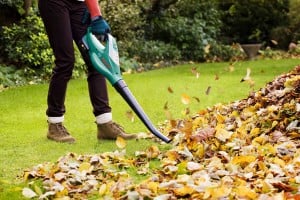Autumn Lawn Care Tips
Besides enjoying pumpkin-spiced everything and thinking about what you’ll be for Halloween this year, fall is a great time to give your lawn an extra boost to make it through the upcoming winter months. Cool-season grasses in particular need a fall feeding to get ready for spring next year. Here are a few of our green industry tips on how to winterize your own lawn.
Fall Lawn Fertilizing
- Fertilize cool-season grasses, like fescue, bluegrass, and ryegrass in September, October or November.
- Fertilize warm-season grasses, like Bermuda, Zoysia, and St. Augustine in July, August or September.
 Help Control Lawn Disease, Weeds and Insects
Help Control Lawn Disease, Weeds and Insects
- To help prevent lawn diseases during the fall and winter, remove fallen leaves from your yard. Leaves left on your lawn encourage diseases by preventing sunlight and air from reaching the grass. Use a rake or blower to collect the leaves, and add them to your compost pile. Or, give us a call to schedule your fall leaf clean-ups. We’ll remove yard waste as well!
Fall Lawn Mowing and Composting
- The best time to spread mulch is early fall, spring and summer. This is partly because mulch retains heat and moisture.
Winterize a Warm-Season Lawn
- Starting with the first freeze of the season, a warm-season lawn will begin to change from green to brown. This period of dormancy is a natural part of the life cycle for turf grass. This makes fall a great time to overseed your dormant lawn with a cool-season grass to maintain a greener lawn appearance.
